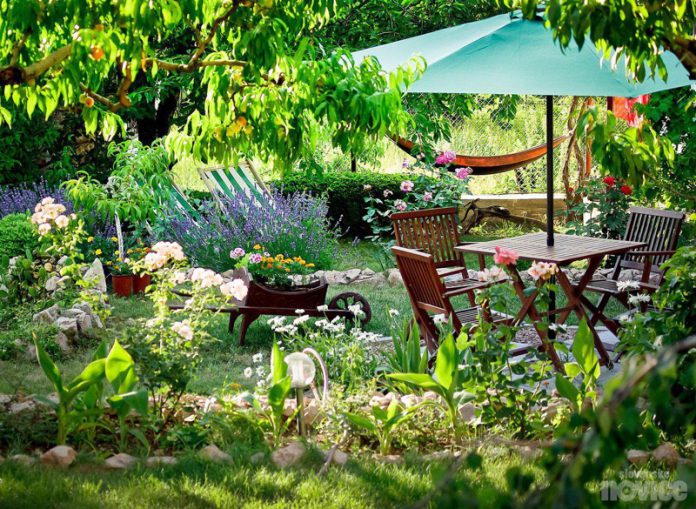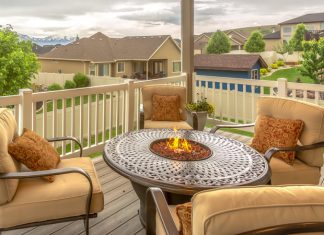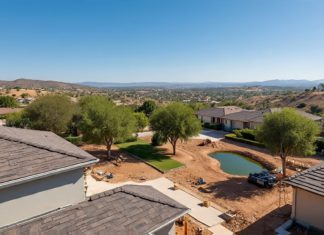A common concern for even the most dedicated, arduous gardeners is how to navigate a delicate relationship with wildlife. While it’s a great idea to encourage wildlife in your yard, they can still be bothersome to your actual garden. The good news is, there are plenty of things you can do to prevent wildlife access to your veggie patch or flowerbeds, but not your whole yard. In this article, we’ll look at some of our favorites (and the most efficient steps to take). If you’re worried about a specific situation not touched upon in this blog, ask professional companies like All Star Animal Trapping for advice, or even to inspect your property. They’ll be able to assess the situation, and advise you on how to best encourage wildlife to enter your garden.
Note: The best way to have a wildlife-friendly garden, but also protect certain patches is to fence those up.
1. Let your grass grow.
One of the easiest ways to encourage wild animals to take shelter on your property is simply giving the lawnmower a miss for a while. The way this works is, wild animals are discouraged by short, neat grass, since that doesn’t offer good hiding space. If they’re easy to spot as they scuttle across the ground, that might also make them easy to kill. So wild animals favor overgrown lawns. And if you’re looking to build a wildlife-friendly yard, what better way to do that than letting your grass grow a bit?
2. Install feeders.
Another good idea for inviting wild animals into your backyard is to provide them with an easily accessible source of food. Depending on the type of animal you wish to entice, this may be a bird feeder, or something a little larger.
Supplying an alternate source of food for your furry visitors can also keep your vegetable patch safe. Of course, you should still keep it fenced, for better protection. But if the animals have a different source of food to that, they won’t really bother trying to break through your fence.
3. Set up a compost heap.
A compost heap has a myriad of benefits, first among which, the fact that it recycles your kitchen waste. Setting up a compost heap in your backyard is also super useful for attracting wildlife, specifically minibeasts.
Invertebrates like worms, spiders or millipedes will immediately flock to your compost heap. And if you’re looking to build a wildlife sanctuary, that’s excellent news, because they will attract larger animals. Most common garden wildlife feeds on invertebrates, so having an invertebrate-rich compost heap is practically an open invitation.
4. Build an insect hotel.
While these can be purchased at traditional stores, you can also build your own DIY insect hotel, by using old twigs, rotten wood, and fallen branches. A wood pile will rapidly attract all sorts of insects, spiders, beetles and other critters. Not only are these considered helpful for the environment, but they will also attract other creatures, like birds.
And speaking of insects that help the environment and your garden, you can also consider getting a beekeeping kit and start nurturing bees. They are not just useful for their honey but also help with pollinating flowers in your garden.
5. Dim the lights.
If you’re interested in attracting bats to your garden, one good step to take is reducing outdoor lights. For instance, if you’re sporting a porch or deck light, or even have hanging lights strewn through your garden, it’d be a good idea to take them down. Bats have really poor eyesight, like most nocturnal creatures, and they tend to avoid any well-lit areas.
6. Just add water.
Remember that wild animals are looking for three things: food, water, and shelter. If you want to build a more wildlife-friendly garden, a great idea would be to add a running water source. This can be a bird bath, pond, fountain, stream, and so on. Not only will this add a nice decorative touch, it will also increase the wildlife population.
7. Observe dangerous wildlife.
Unfortunately, one downside of creating a wildlife-friendly haven is that it also attracts pests and nuisance wildlife. These are basically larger animals like coyotes, or foxes, or raccoons, that can damage your yard, or even your home. Not only that, but they can also harm or at least discourage smaller critters, birds, insects, etc., from nesting on your property.
If you find yourself in that situation, make sure you find a professional near you as swiftly as possible in the interest of damage control.














